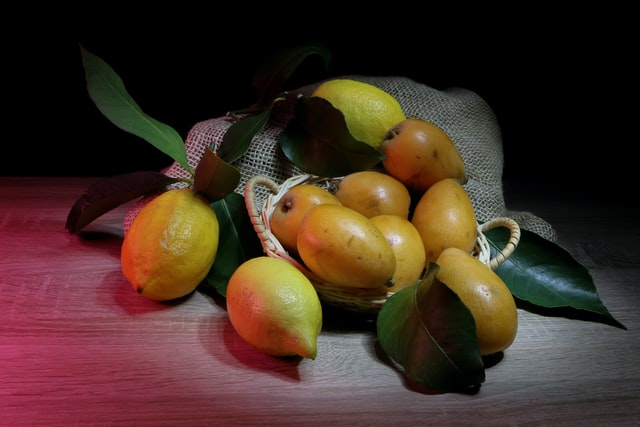Often a misunderstood fruit, medlars are an unusual food that, at one time, were in abundance. Dwarf medlar trees have slowly been increasing in popularity due to their hardy nature and attractive flowers. Being so small, size won’t be a barrier when it comes to having one of these in your garden. They don’t suffer from any serious pests or diseases either, making them an attractive option.

Dwarf medlars produce spectacular autumn colours from September. The trees even look attractive during the winter, thanks to their unusually shaped branches. The blossom is distinctive, with white petals and yellow antlers.
The medlar fruit itself should be left on as long as possible and once harvested, left to blet for a few weeks. Fruit can grow after a few years on medlar fruit trees and you can plant yours in a pot or the garden.
If you are lucky enough to have more medlar fruit to use than you know what you do with, our article on using up a medlar glut is here to help!
Jump To...
Growing Dwarf Medlar Trees
Due to their compact size, growing medlar trees appeal to a variety of aspiring gardeners.
Let’s not forget that by growing a dwarf medlar, you are treated to stunning colours during the changing seasons. Most importantly, any pruning and caring will be minimal, meaning you don’t need to be particularly experienced in tree care.
- What Size Pot for a Medlar Tree? 24” in diameter
- Compost: Well-drained soil
- Watering: Frequently during its growing season and during dry spells
- Feeding: Place a layer of mulch around the base and you can use fruit fertiliser.
- Rootstock: Dwarfing rootstock
Common Dwarf Medlar Tree Problems
- Winter Moth Caterpillars: Feeding on newly emerging buds and leaves, these moths can be problematic for medlar trees. Larvae produced can be blown to other trees, causing a widespread infestation. You can manually pick the caterpillars off when you spot them or encourage lots of bird life in your garden who will eat them and feed to their young.
Pruning Dwarf Medlar Trees
An important part of the pruning process is keeping its shape so bear this in mind when cutting back. Pruning won’t entail too much else, unless there is a problem with the tree.
When to Prune
It’s crucial to remove any diseased or damaged branches as this can be a sign of disease. In the summer, cut new growth back to half the length. You may need to do some initial pruning once you’ve planted your tree too.
How to Prune
It’s crucial to remove any diseased or damaged branches as this can be a sign of disease. In the summer, cut new growth back to half the length.
FAQ’s
Dwarf medlar trees grow well in containers and stay at a more than manageable height throughout their life. The only pruning you will need to carry out is to maintain its shape at all times.
Dwarf medlar trees grow no taller than 1.5 to 2 metres which makes them perfect for patios or balconies.
Dwarf medlar trees prefer well drained soil. It is best to avoid planting them in chalky soil without enriching.
